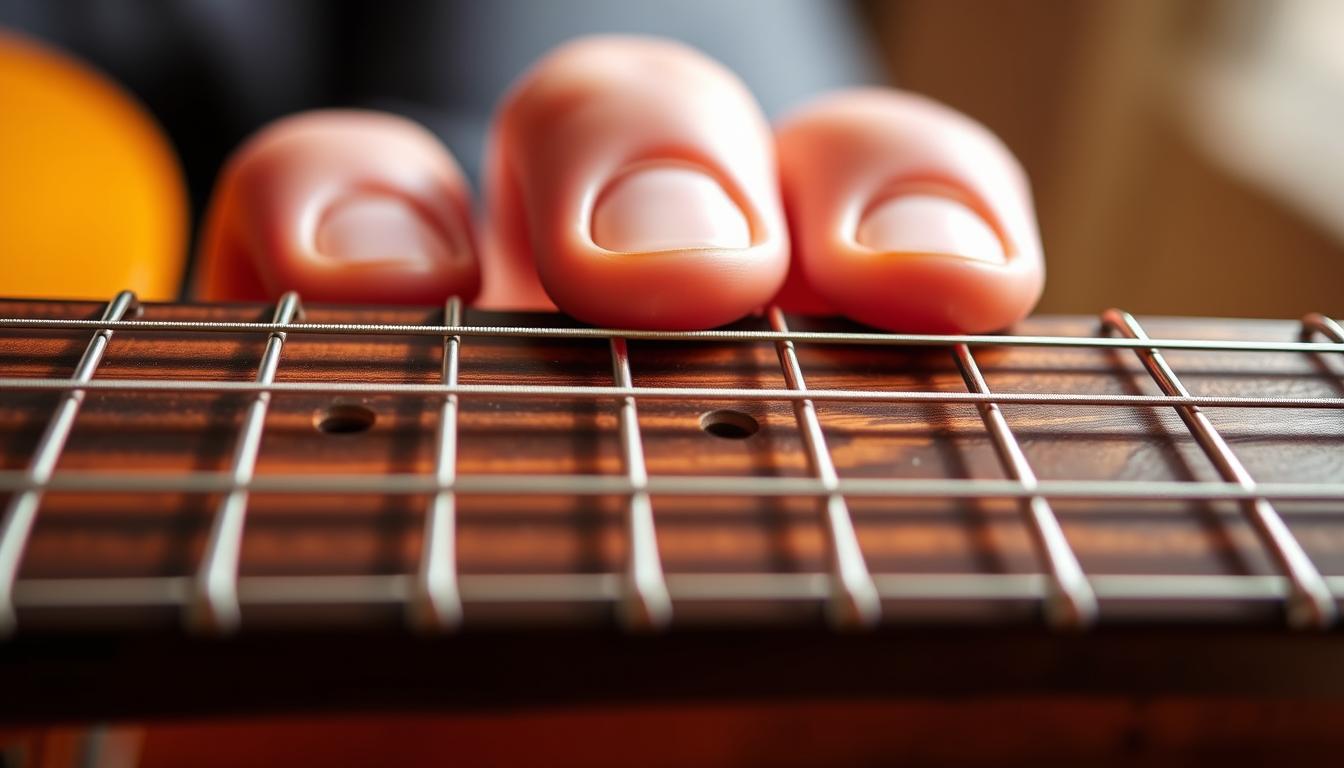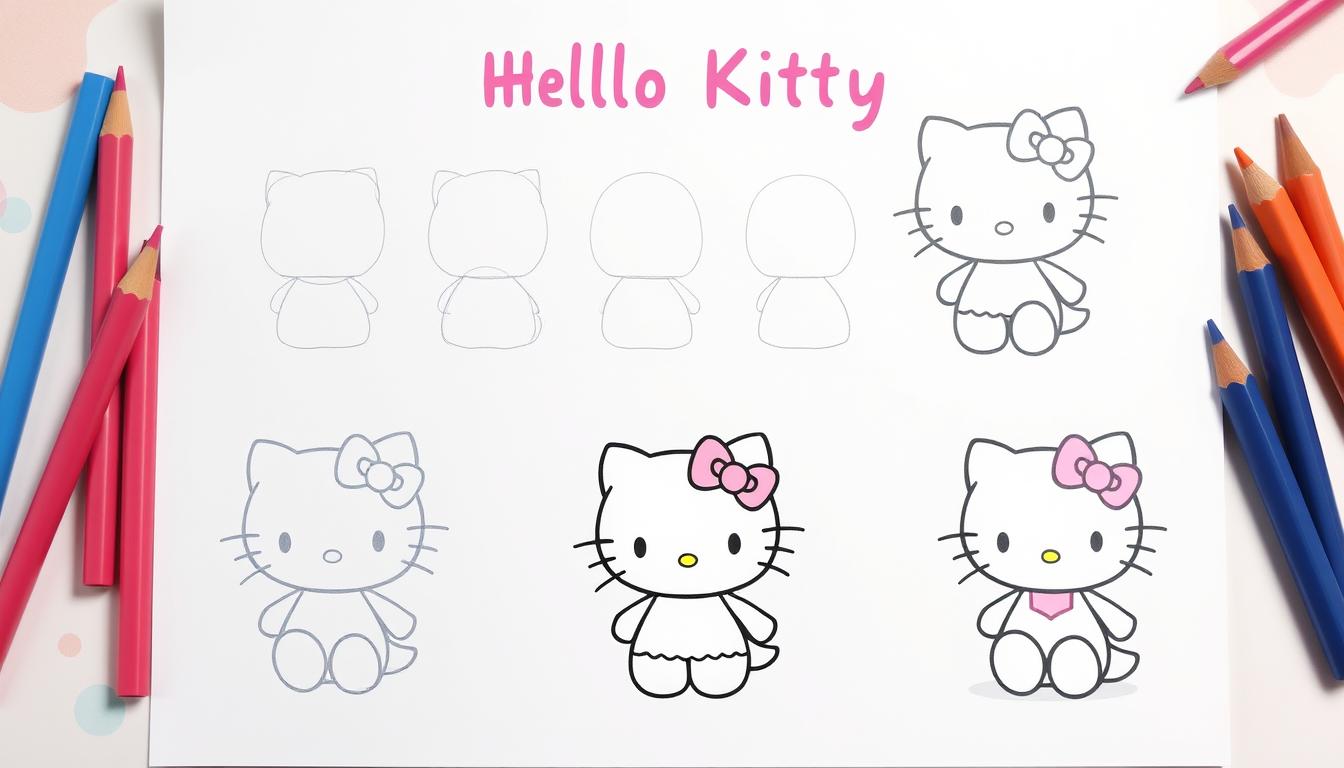How to Play Guitar Chords
Guitar chords are the heart of musical expression. They allow you to create beautiful harmonies and play countless songs. Most guitars have 6 strings, offering a rich canvas for creativity1.
Chord diagrams are essential for beginners. They show where to place your fingers on the fretboard. This visual guide helps you create specific sounds1.
Mastering a few basic chords opens up thousands of musical possibilities. Western music has 12 possible note combinations. This gives guitarists incredible versatility in creating unique sounds1.
Focus on learning fundamental open chords first. These will build your musical confidence and technique.
Puntos clave
- Learn the basic 6-string guitar configuration
- Master reading chord diagrams
- Start with simple, beginner-friendly chords
- Practice consistent finger positioning
- Understand the foundational 12 musical notes
Understanding Guitar Basics for Chord Playing
Guitar chord mastery starts with grasping your instrument’s key elements. Chord theory builds a solid foundation for your musical journey2.
These basics will help you confidently navigate chord charts and changes.
Guitar String Names and Numbers
A guitar has six strings, numbered from highest to lowest pitch2. Here’s a quick look at the string setup:
- 1st String (highest): High E
- 2nd String: B
- 3rd String: G
- 4th String: D
- 5th String: A
- 6th String (lowest): Low E
Finger Positioning and Numbering System
Proper finger placement is key for playing chords well. Guitarists use a standard numbering system:
- 1 – Index finger
- 2 – Middle finger
- 3 – Ring finger
- 4 – Pinky finger
- T – Thumb (used sparingly)
Reading Chord Diagrams and Charts
Chord charts show exact finger placement for various guitar chords3. Here are some key chords to start with:
| Acorde | Composición | Dificultad |
|---|---|---|
| G Major | G, B, D | Principiante |
| C Major | C, E, G | Fácil |
| E Minor | E, G, B | Muy fácil |
Consejo profesional: Some chords can be learned quickly. This allows you to start playing songs and improving your skills fast3.
Essential Guitar Chords for Beginners
Learning basic chords is the first step in your guitar journey. The School of Rock suggests focusing on core chords that are common in popular songs4. G, C, and D chords are vital for beginners and appear in many music genres4.
Understanding string usage helps with chord practice. The G major chord uses all six strings. C major uses fewer strings, and D major uses even less4.
Two-finger chords like E minor and A7 are great for beginners. They make it easier to switch between different chord shapes5.
Smooth chord transitions are crucial for creating melody. Practice changing between chord pairs like E minor and E major. Start with eight beats and gradually speed up5.
Simple songs like “Sweet Home Alabama” are perfect for practicing new skills. They help you apply what you’ve learned in a fun way.
Tech tools can boost your learning. Fender Play offers a Chord Challenge mode to track your progress4. Remember, regular practice and patience are key to mastering guitar basics.
Preguntas frecuentes
What exactly is a guitar chord?
How many basic chords should a beginner learn?
What are chord diagrams, and how do I read them?
How long does it take to learn basic guitar chords?
What are power chords, and why are they important?
Do I need special equipment to practice guitar chords?
How can I improve my chord transitions?
What are the most common chord progressions for beginners?
Should I learn to read music to play guitar chords?
How often should I practice guitar chords?
Enlaces de origen
- Absolute Beginner Part 1: Chords – https://www.guitarnoise.com/lessons/absolute-beginner-part-1/
- How to Play Guitar Chords (with Pictures) – wikiHow – https://www.wikihow.com/Play-Guitar-Chords
- How to Play Guitar Chords | Learn Basic Chords – https://www.fender.com/pages/guitar-chords
- Essential Beginner Chords: G, C, and D – https://www.fender.com/articles/chords/essential-beginner-chords-g-c-d
- Which chords should I begin learning? – https://www.guitarnoise.com/help/beginner-chords/
último vídeo
Noticias vía bandeja de entrada
Nulla turp dis cursus. Entero liberos euismod pretium faucibua








